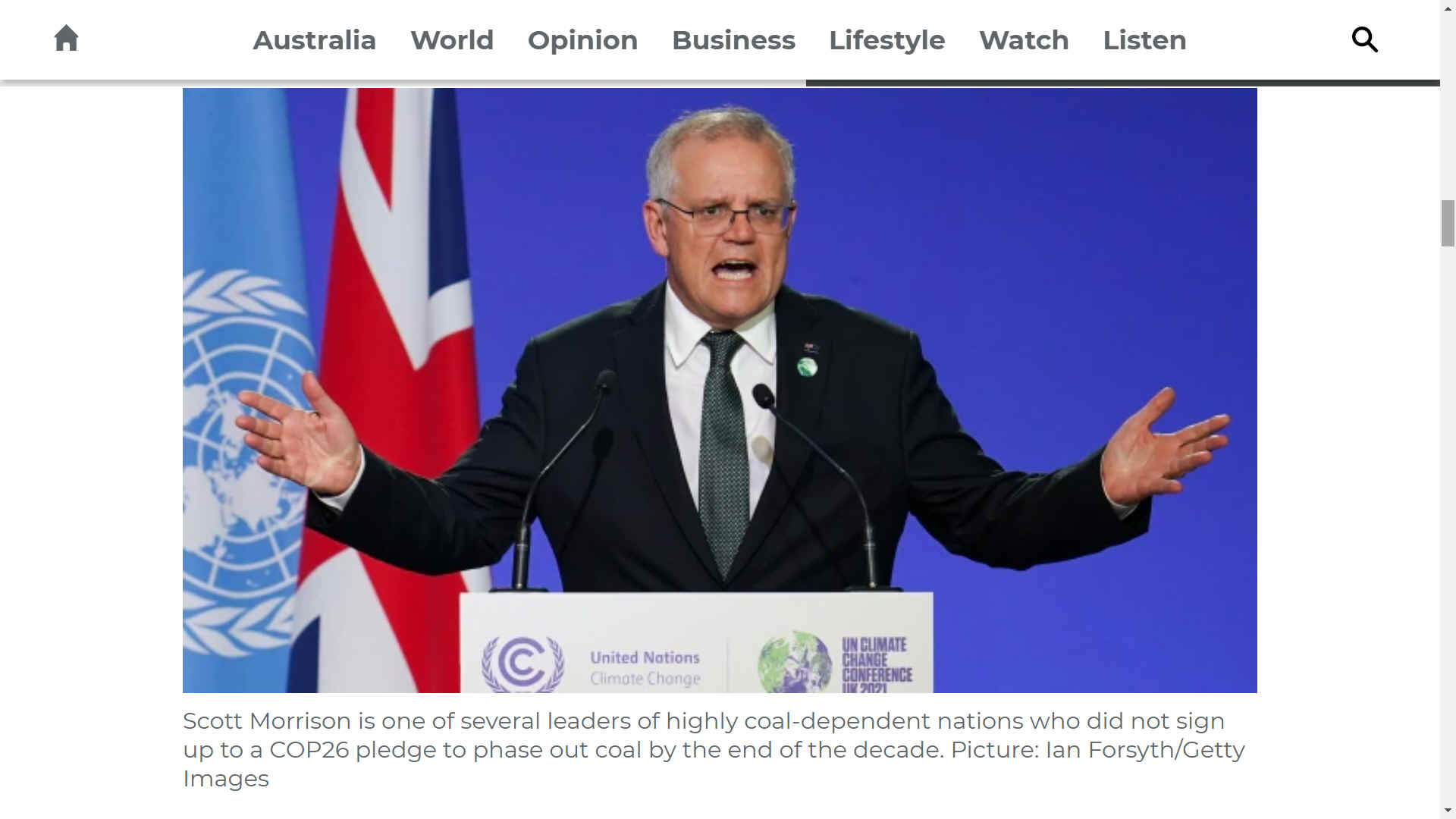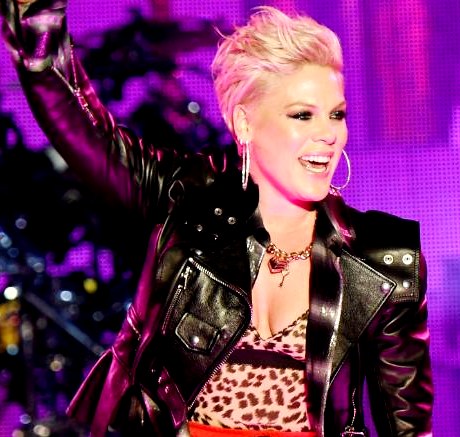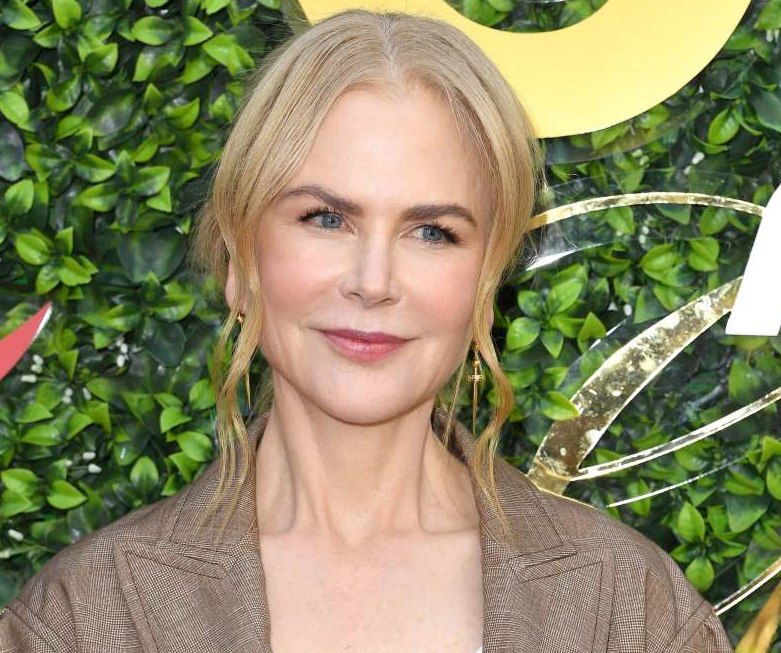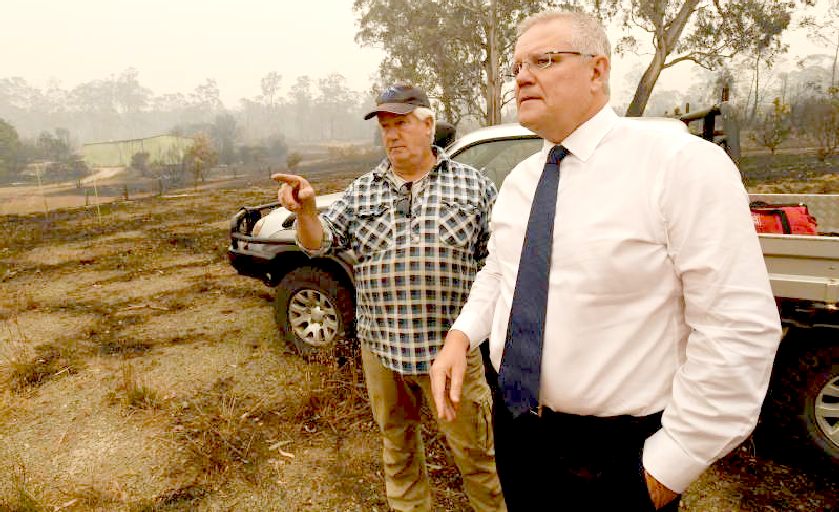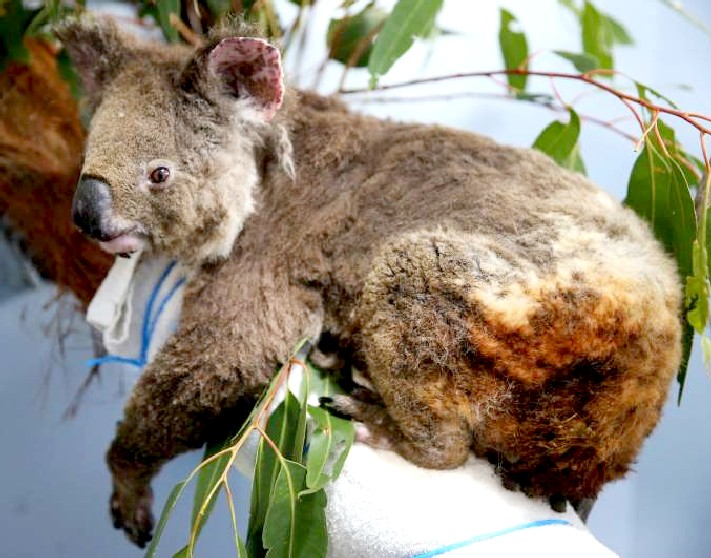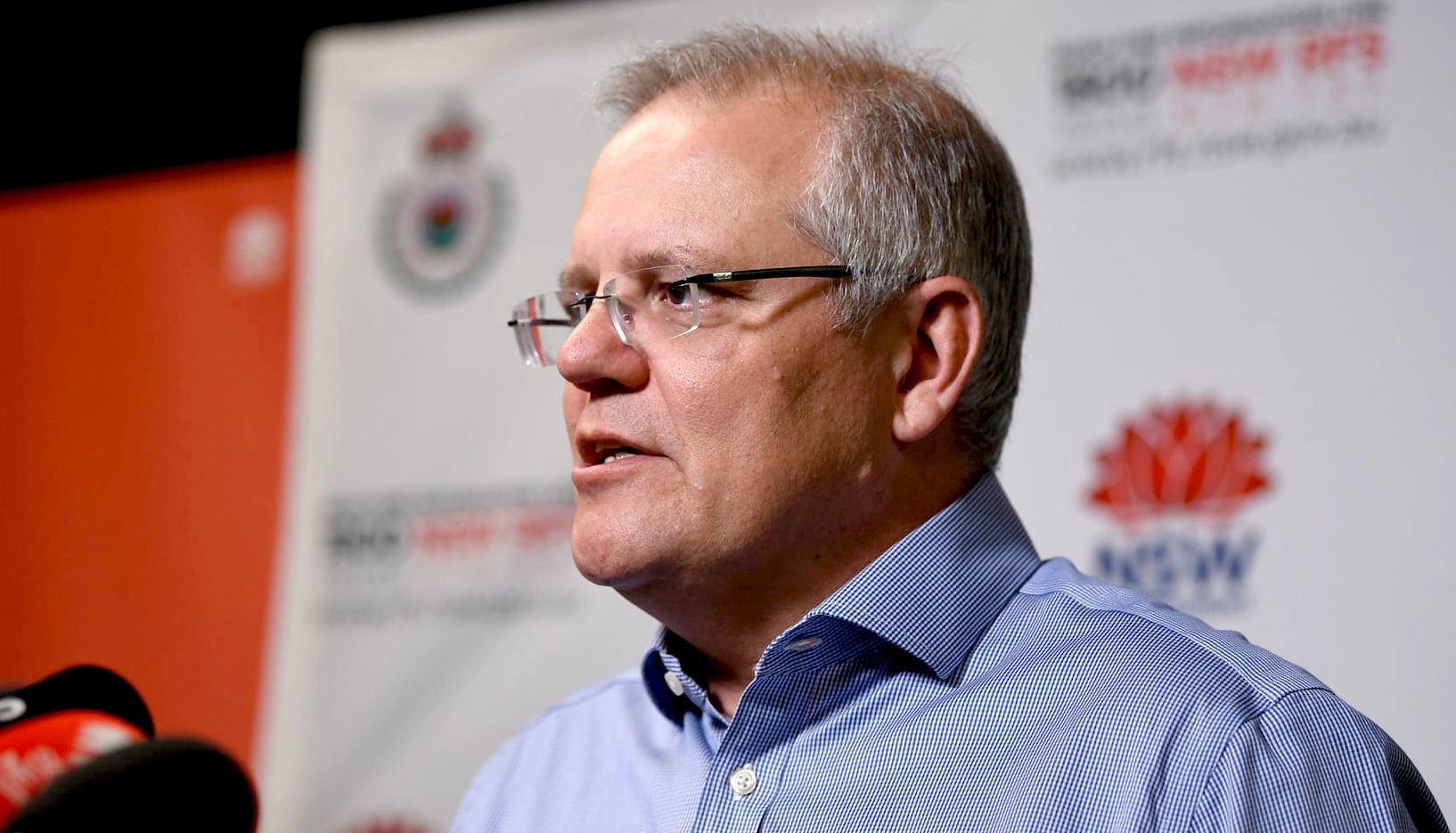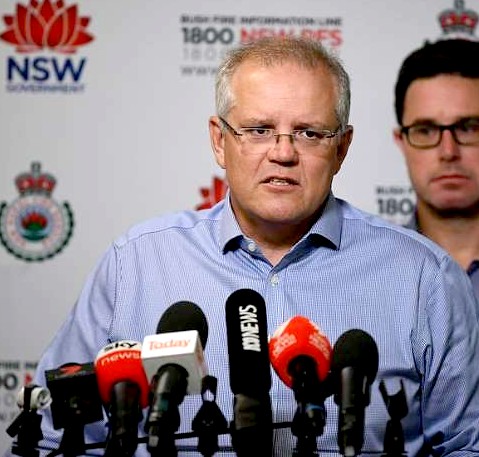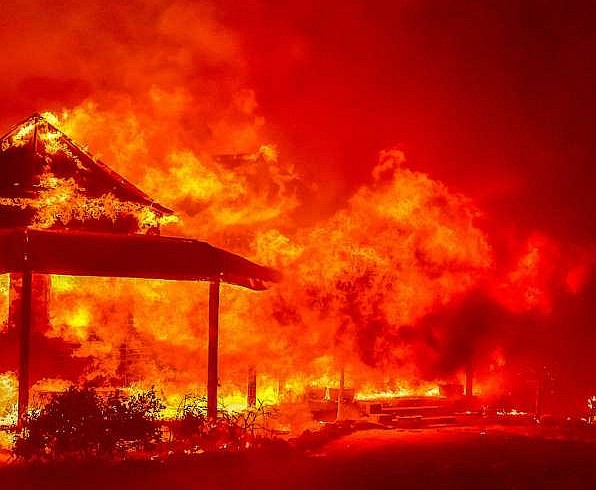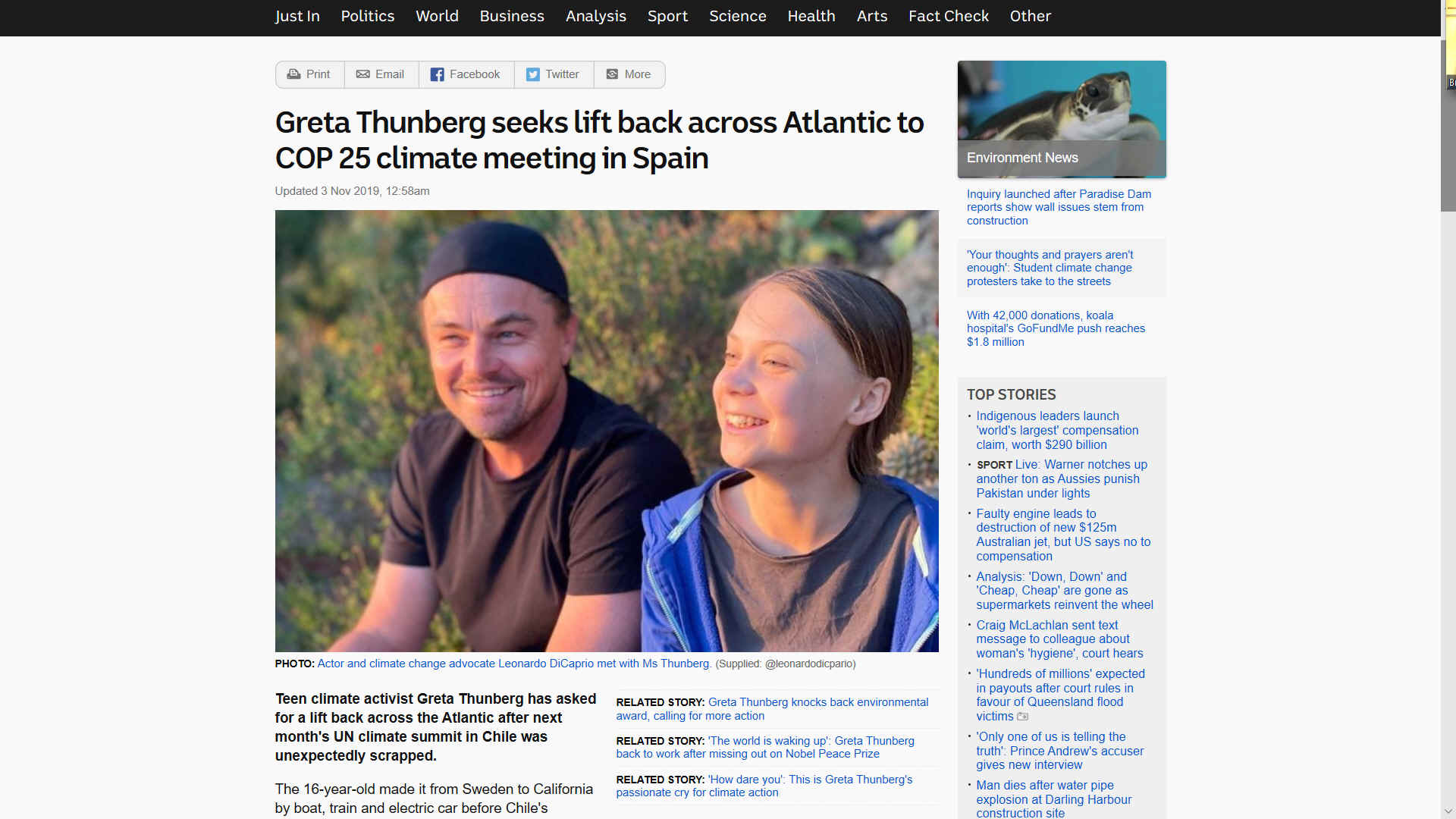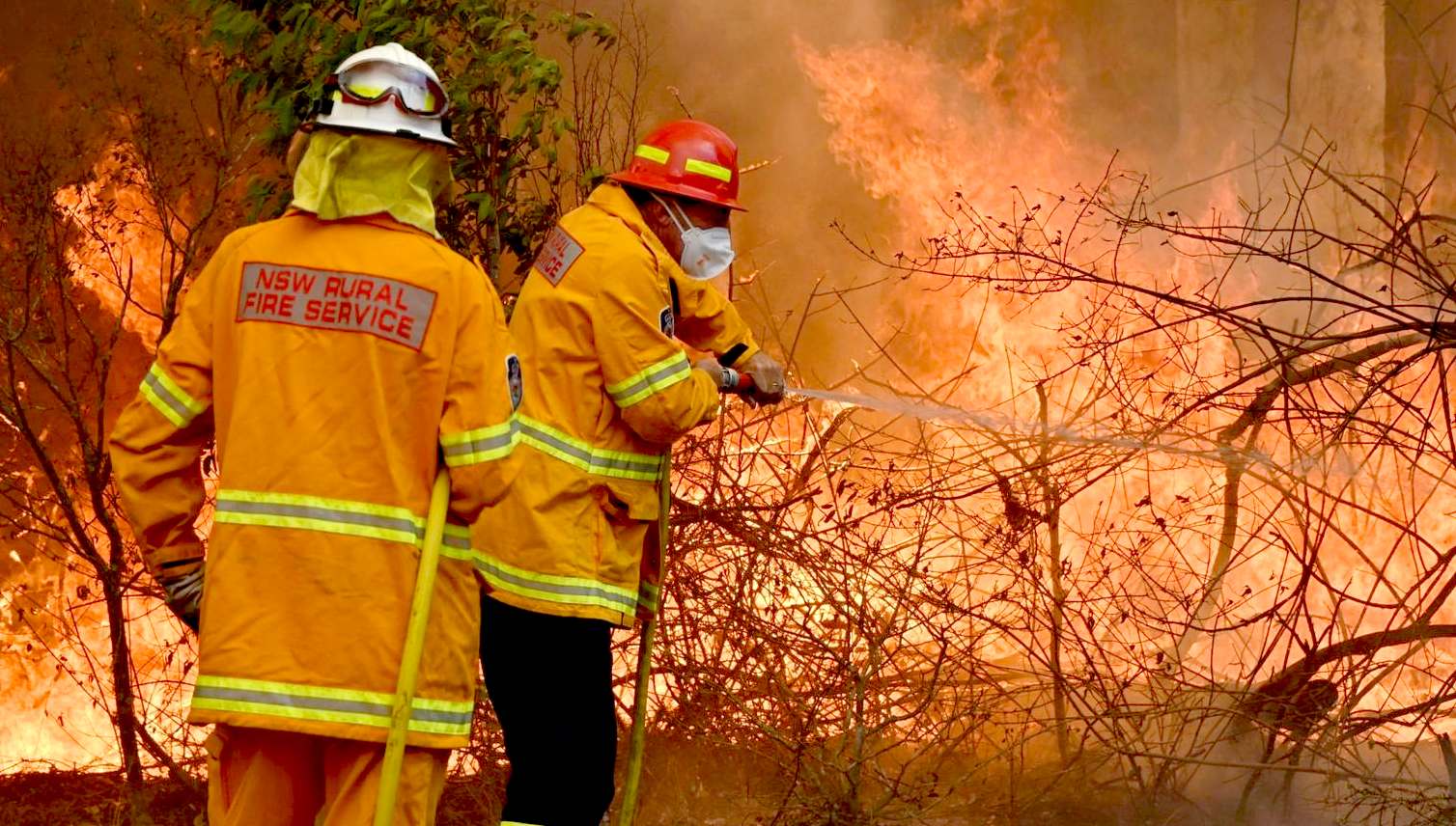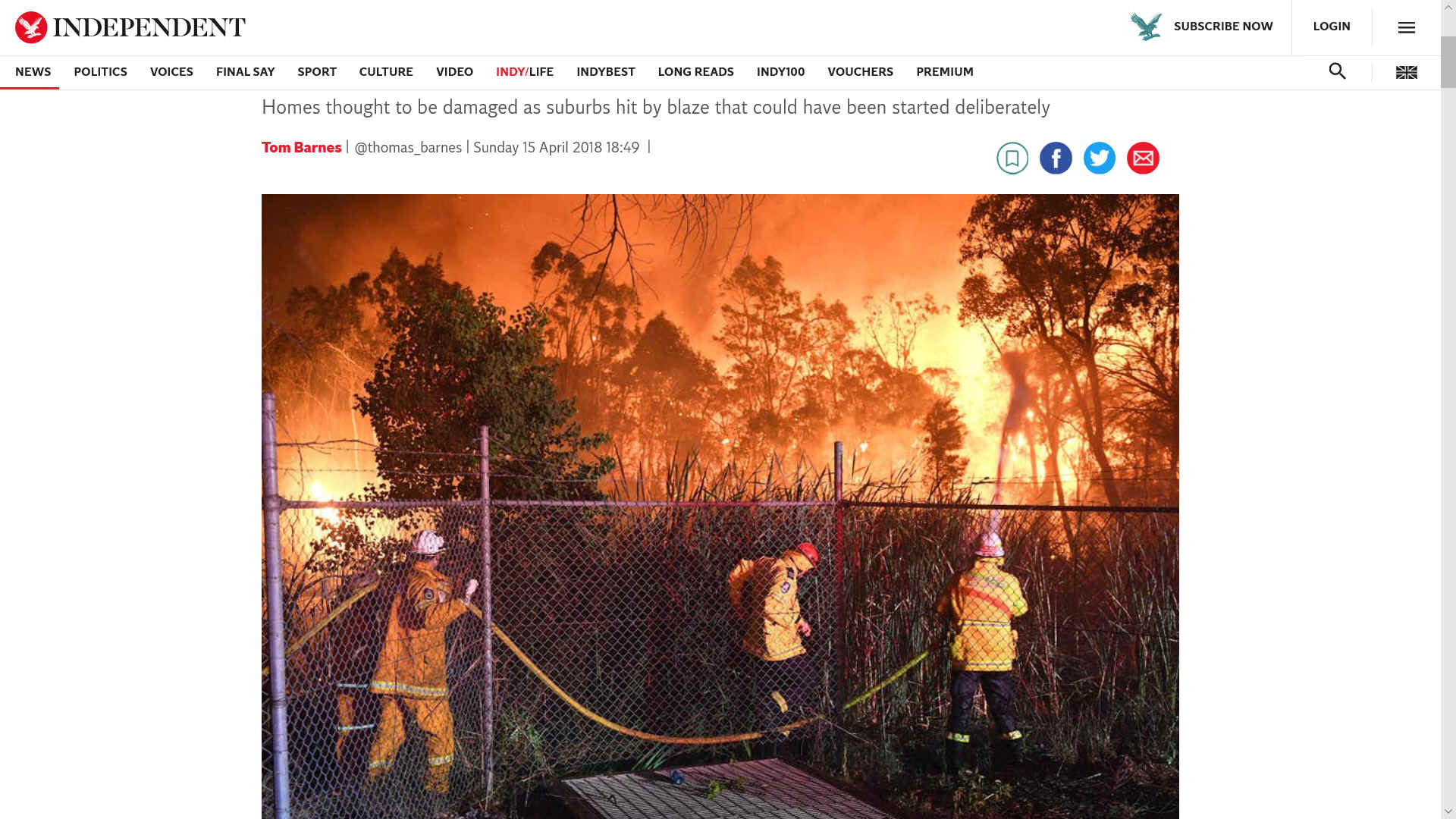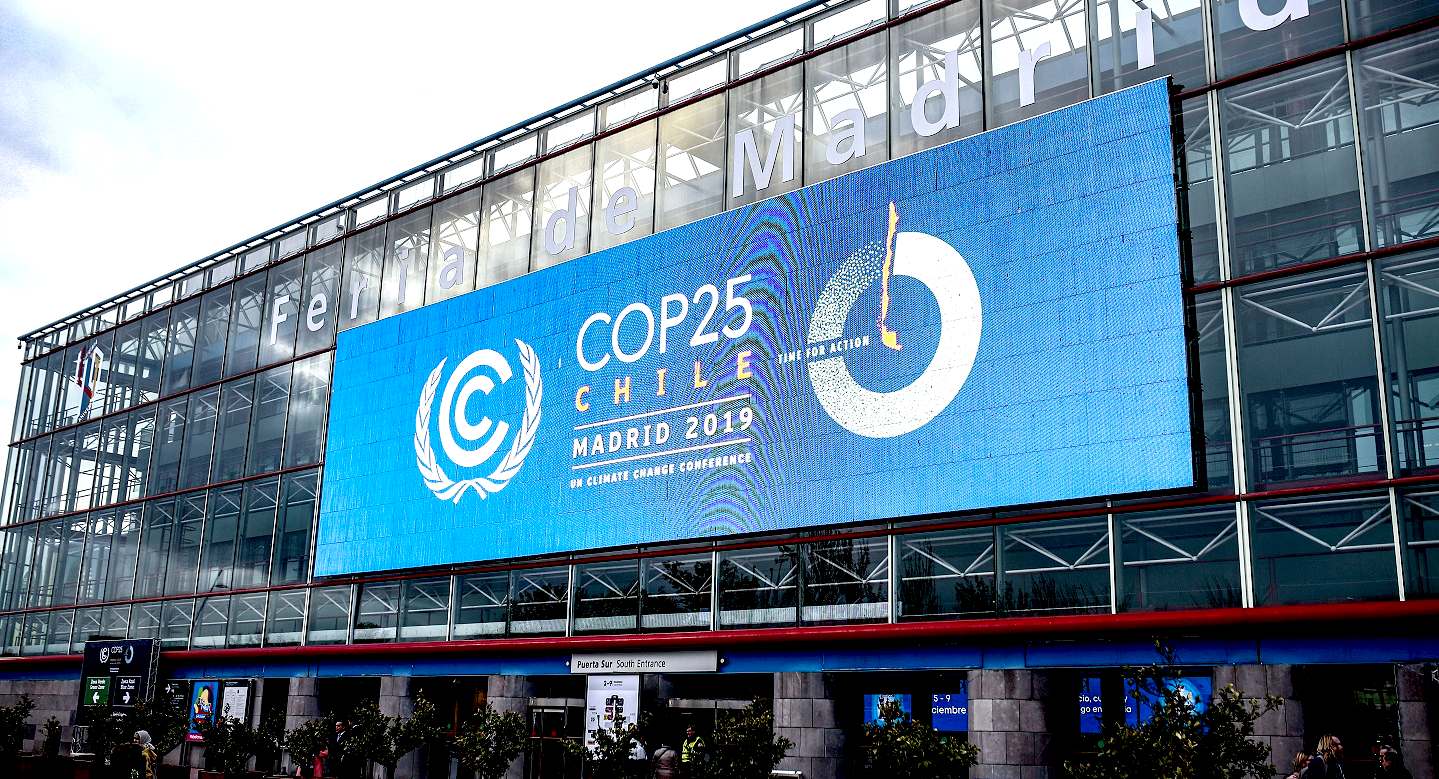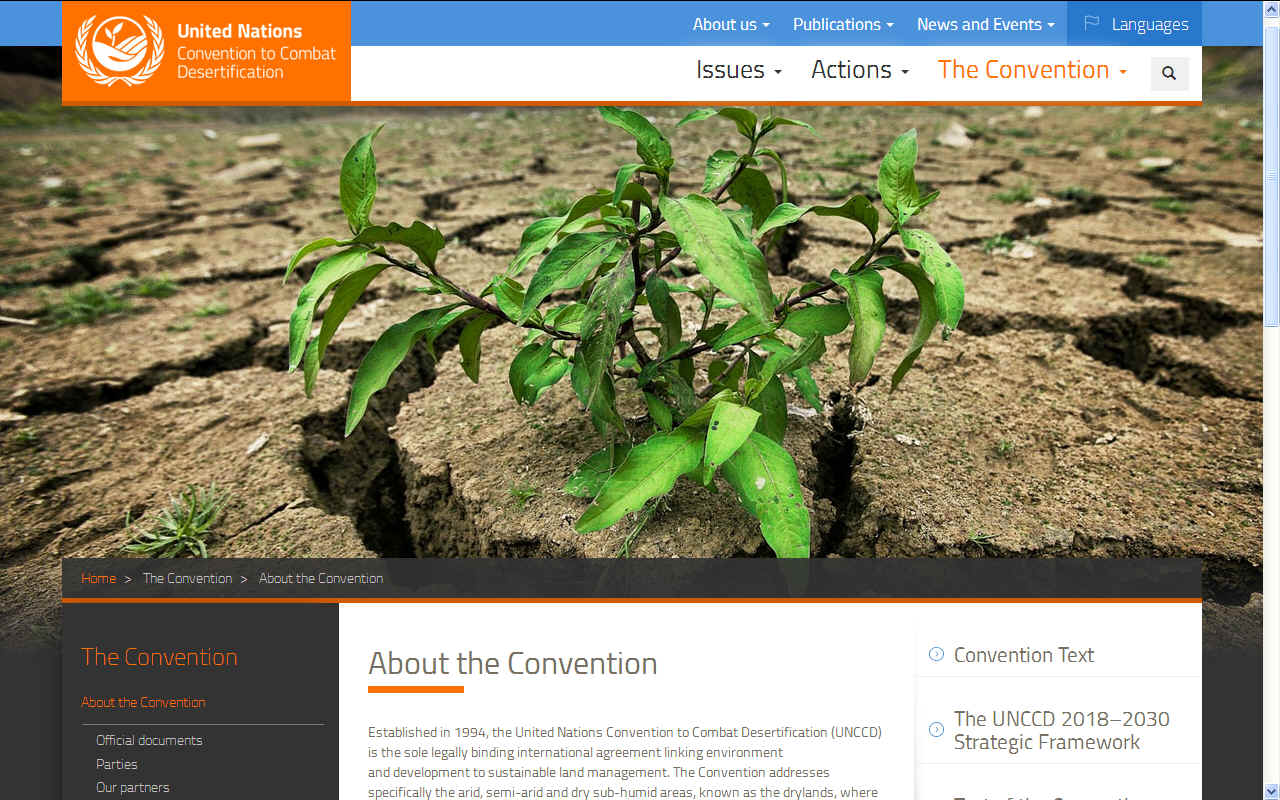|
AUSTRALIAN - BUSH WILDFIRES
|
|||||||||||||||||||||||||||||||||||||
KANGAROO HOP OUT 26 POLITICS - A climate ostrich, burying his head in the sand, and his hand in the wallets of coal exporters, aiming for growth, when climate cooling calls for restraint and better management. One wonders at the motivation of a man who knows coal is killing people all over the world, and creating havoc with forest and bush fires? Has anyone taken a look at his bank balance and declarations as to conflicts of interest? Corruption and lack of transparency is one of the main causes of global warming. The UN should adapt anti-terrorist tracking software, to monitor politicians all over the world. We need a multi-agency approach to catch climate criminals, and bring them to justice.
"Mmmm. Those crazy hippies might have a point. It is getting a little warmer than I'd Like. Think we'll wait it out another few years, just to be sure."
MSN 4 JANUARY 2019 - Nicole Kidman was visibly upset and in tears at a Golden Globes event in L.A. on Saturday, January 4, as she learned that her Australian home had burned down in the bushfires devastating the country. [In fact it is under threat and survives] The Oscar winner, 52, was at the Gold Meets Golden pre-Golden Globes event in Beverly Hills, where an eyewitness told Us Weekly that she “looked very tired and sad.”
One of the event organizers “said she just found out that her house burned down in Australia and she’s very upset,” the insider continued. “She was crying as she walked into the red carpet.” The star, who was wearing jeans and a metallic coat with her hair tied back, went into the event wearing sunglasses. “She was very poised, taking photos and talking with Joey King and Josh Dallas. She had a whole crowd around her and no one knew what she had just experienced. It was sad to watch but also showed how professional she is to still show up and do what is required of her,” the eyewitness added. Kidman left the event after 15 minutes.
Nicole Kidman's house in Los Angeles is said to be their main home. In 2008 they purchased a Hollywood Hills home for $4.7 million. They have some incredibly famous neighbors too. Adele, Ashton Kutcher and Mila Kunis, Jennifer Lawrence, Katy Perry, and Cameron Diaz.
The bushfires currently affecting Australia have burned more than 12 million acres. Celebrities, including Pink and Celeste Barber, are pledging to help those affected by the wildfires. At least 23 people have died in Australia wildfires and in the state of New South Wales alone, more than 1,300 houses have been destroyed. Everyone on the planet should be working toward fighting global warming. If they don't, things can only deteriorate.
THE
ASHES - CBS NEWS 3 JANUARY 2020 - Australian wildfires may have killed half a billion animals and plants
While animal hospitals are taking in as many animals as possible to treat burns and nurse them back to health, services have overall struggled to keep up with the amount of care needed. And the animals that have survived will have trouble finding food and shelter among the ongoing flames.
Koalas "really have no capacity to move fast enough to get away" from the flames, he said.
Associate Professor Dieter Hochuli from the University of Sydney said it isn't just the well-known species, such as kangaroos and koalas, that are at risk. Insects that are key to services like pollination and nutrient cycling also suffered massive losses, and it is not clear how those populations and ecosystems will recover. Additionally, many rare plant species are feared to have disappeared completely.
Wildlife Information, Rescue and Education Services told Reuters that services typically advise against feeding wild animals. However, the inferno has prompted them to change their advice. They're now encouraging people to provide wildlife with much-needed food and water.
CLIMATE CRIMINAL? THE GUARDIAN 22 DECEMBER 2019 - Scott Morrison has signaled the Australian government will not increase its efforts to combat climate change despite an extended bushfire crisis and a record-breaking heat wave.
Returning to work on Sunday after a controversial family holiday in Hawaii, the Australian prime minister apologised for his absence on top of the mea culpa he offered on Friday while still overseas.
At a press conference after a visit to the New South Wales Rural Fire Service headquarters in Sydney, Morrison called on Australians to “be kind to each other” and reject division – but then accused those who want more action against global heating of political point-scoring.
Morrison acknowledged that his absence – leaving deputy prime minister Michael McCormack in charge since Monday – had caused “great anxiety” and said if he had his time over he “would make different decisions”.
SA premier says 72 homes destroyed in Cudlee Creek fire as NSW blazes rage on.
“I am comforted by the fact that Australians would like me to be here simply so I can be here alongside them as they go through this terrible time,” he said. “And so to those Australians who ... I had caused upset to I apologise for that.” Morrison then sought to turn the page on the episode by unilaterally declaring “the time for that discussion is over”.
Morrison said there was “no argument” about the links “between broader issues of global climate change and weather events around the world” but it was “not a credible suggestion” to make a direct connection to any single fire event. Global heating is leading to longer, hotter, drier summers which experts agree increases bushfires’ frequency and severity. But Morrison said it was “one of many factors”, listing others including back burning, vegetation management, building codes, carelessness, arson and lightning strikes. On Saturday, McCormack said he “absolutely” agreed that “further action” to combat climate change is needed. Morrison appeared to snuff out hope his government will improve its policies, which have caused Australia to be rated worst out of 57 countries for its handling of climate change by a group of think tanks.
PM QUOTE - “I do not accept the suggestion that Australia is not carrying its weight.”
Morrison claimed that McCormack was “making exactly the point I’m making” – citing existing commitments in the Paris agreement to decrease Australia’s emissions by 26% by 2030 – although he also suggested there may be room for “further refinement” before 2030. Australia needs to cut emissions by 695m tonnes cumulatively across the next decade to meet its 2030 target. The Morrison government has said more than half of that cut, 367m tonnes, will come from accounting – using carryover credits from meeting earlier Kyoto targets – and not from practical emissions reduction.
The centrepiece of Australia’s policy is a $2.55bn fund to pay polluters to reduce emissions, after the Liberal-National government abolished Australia’s carbon price in 2014. Asked about the use of carryover credits, Morrison replied that “people can expect my government to do what it promised to do, what it took to the last election”.
“I know there are some who tried to make political points and score points over these issues in the midst of these disasters and that is disappointing.”
Morrison said the government would not act in a “knee-jerk, crisis or panicked mode” – likening his refusal to increase ambition on climate change with the steady professionalism of those managing the bushfire emergency.
“A panic approach and response to anything does not help. It puts people at risk. “Not just their livelihoods but, I mean, if you walk out there into the control room you will not see people panicking, you will see people be very professional, very focused on the job they have, talking to each other in a very professional way and getting the job done. Government’s the same thing.”
Minutes after calling for an end to division, arguing, partisanship and point scoring, Morrison said the Coalition is reducing emissions without the “reckless job-destroying and economy-crunching targets that others are seeking to force upon us”. The government’s own projections show Australia is on course for 50% renewables by 2030 – a target which Morrison labelled as reckless and economy-wrecking in the May election campaign. Morrison flagged that he will discuss resourcing for future emergency management with states and territories at a meeting in March. Morrison said the government is considering calls to pay volunteer firefighters, but noted that is “in the first instance” a matter for state governments.
Morrison later visited the families of Geoff Keaton and Andrew O’Dwyer, two volunteer firefighters killed late on Thursday near the town of Buxton, and conveyed his sympathies. Labor leader Anthony Albanese told reporters in Sydney it was a “good thing” Morrison is back but there was “no change” in the prime minister’s approach to the bushfires or climate change. “The deputy prime minister yesterday said [that] new measures were needed … and today, going from the acting prime minister to the real prime minister, we have a dismissal of the need for any action on climate change,” he said.
Albanese said Morrison’s holiday was “a matter for his judgement”. “He chose to leave. He chose also to do it in a way that I think created a major issue of secrecy.” Earlier, the NSW premier Gladys Berejiklian and federal emergency management minister David Littleproud announced an additional $3.5m of disaster recovery funding to the Wingecarribee and Wollondilly local government areas. The commitment brings the total federal-state recovery fund to more than $63m.
DAILY MAIL 22 DECEMBER 2019 - Australia fires: NSW devastation laid bare as 72 homes destroyed in SA bushfires
It is feared the figures for homes lost may get much worse as authorities continue to assess the damage from Saturday, and with dozens of fires still active. Conditions eased in NSW, Victoria and South Australia on Sunday, allowing fire-threatened areas some respite.
But the NSW Rural Fire Service commissioner, Shane Fitzsimmons, said an estimated 100 buildings could have been lost in Balmoral, where Gladys Berejiklian said there was “not much left”. “The toll is significant,” Fitzsimmons said.
A man who was reported missing during the Grose Valley fire in the NSW Blue Mountains was found safe in an evacuation centre, but another elderly man from Bell near the town of Lithgow was missing as of Sunday afternoon. The area was engulfed in flames on Saturday.
The prime minister, Scott Morrison, returned to Australia from his holiday in Hawaii on Saturday night.
“The time for that discussion is over. We need to focus on what is going out there today. Let me finish by saying this … it is time to be kind to each other. This is not a time for division, it is not a time for argument, it is not a time for partisanship, it is not a time for point scoring,” he said.
The opposition leader, Anthony Albanese, praised emergency management minister David Littleproud for providing updates to him about the bushfires, but said he had not been able to secure a tour of the RFS headquarters Morrison visited in the morning, despite requests.
MAIL ONLINE 14 NOV 2019 - Leonardo DiCaprio has weighed in on Australia's bushfire crisis and called for a 'radical overhaul' of the country's conservation efforts.
The Hollywood star-cum-environmentalist took to Instagram on Thursday to share photos of the devastation brought on by raging wildfires across NSW and
Queensland. The post, a 'regram' from wildlife sanctuary account Aussie Ark, called for Australians to take action, pointing out the country's 'worst on Earth' mammal extinction rate and the country's top seven ranking in the world for biodiversity loss.
'Our hearts go out to the victims of the current fires, which we know have been exacerbated by the decline of native biodiversity.'
NEW YORK TIMES 5 DECEMBER 2019 - Australian Firefighters Worry About Wildfires Approaching Sydney
"They have the potential or are expected to spread further east, which unfortunately is getting into more populated areas, villages, communities, isolated rural areas, and other farming practices and businesses throughout the region," Fitzsimmons told reporters in Sydney.
SYDNEY APRIL 15 2018
Hundreds of Australian firefighters are battling a large bush fire on the outskirts of Sydney, as police designated the key area a crime scene.
The public have been warned to stay vigilant while the blaze spreads, amid reports that homes have been damaged.
High winds have pushed the flames towards residential areas and authorities said they had received several reports of damage being caused to homes.
The fire has spread through the Moorebank, Wattle Gtove, Menai and Heathcote neighbourhoods but RFS spokesman Greg Allan told AAP it was too early for emergency crews to assess the fire’s impact.
After being briefed at a fire-control centre on Sunday, Australian prime minister Malcolm Turnbull praised the courage of the emergency services staff and volunteers.
"That is a matter of obviously of great concern but we have to deal with the worst that mother nature can throw at us and the worst Australians are presented with,” Mr Turnbull said, ABC News reported.
HISTORY
Forest wildfires in Australia are on the increase. They have accounted for over 800 deaths in Australia since 1851 and the total accumulated cost is estimated at $1.6 billion.
Bushfires are frequent events during the warmer months of the year, due to Australia's mostly hot, dry climate. Each year, such fires impact extensive areas. On one hand, they can cause property damage and loss of human life. Certain native flora in Australia have evolved to rely on bushfires as a means of reproduction, and fire events are an interwoven and an essential part of the ecology of the continent. For thousands of years, Indigenous Australians have used fire to foster grasslands for hunting and to clear tracks through dense vegetation.
Australia
- Black Thursday bushfires of 1851 (Victoria)
FOREST FIRE A TO Z
Arctic Bolivian British Columbian Canadian - Saskatchewan Chilean Croatian Ecuador Europe - Heatwave 17 July 2022 France Greece Malaysian Mongolian Portugal Spain Sweden USA - California, Yosemite - Montana - Georgia - Sacramento UK - Saddleworth Moor - Moray - Dartmoor
......
WOOD IS GOOD x 10 PLEASE
Timber grown for wood is only good if part of a replanting scheme, with at least 2 trees planted for every one felled, though we would suggest up to 10 trees should be planted to offset the loss of carbon absorption during growth.
We need to plant more trees - a whole lot more trees, not clear them, and especially not waste timber that is a vital renewable resource for zero carbon house building. Forest fires that cause deforestation are raising the temperature of Planet Earth and there is no Planet B.
HEATWAVES A TO Z
Australia Brazil
& Amazon rainforest
London had a similar experience in July 2022 Tokyo & Osaka, Japan June 2022 USA
DESERTIFICATION COP HISTORY
CLIMATE CHANGE COP HISTORY
BIODIVERSITY COP HISTORY
OUR (SUGGESTED) SIX STEPS TOWARD A COOLER PLANET
1. TRANSPORT: Phase out polluting vehicles. Governments aim to end the sale of new petrol, and diesel vehicles by 2040 but have no infrastructure plan to support such ambition. Such infrastructure should exceed the performance of fossil fuel filling stations, prolong EV battery life and provide power grids with a measure of load leveling. Any such system should seek to obviate the provision of millions of fast charge points where implementation could prove to be a logistical nightmare and an inefficient energy delivery system. This may involve international agreement as to energy storage format and statute to steer car makers to collaborate (in part) in a world of competition.
Marine transport can be carbon neutral given the right policies, with phased transition in specific stages such as not to unduly penalize present investment in LNG shipping and other recent MARPOL compliant IC powered vessels. Future cargo vessel should be at least in part powered by renewable energy, on the road to zero carbon via the development of shorter distance ferries and the like, making allowances for technology catch-up from 2030 with scrappage trade in on outdated ships and marine taxes on internal combustion engines.
Air travel powered by kerosene should attract hefty mitigation offset, where low carbon alternatives should be encouraged.
2. RENEWABLES: Renewable energy should replace carbon-based fuels (coal, oil and gas) in our electricity for homes, factories, heating and transport. Coal and nuclear power plants should be phased out.
3. HOUSING: On site micro or macro generation is the best option, starting with new build homes that are both affordable and sustainable by design to replace crumbling housing stocks. Encourage building in timber to provide carbon lock from a renewable natural resource. Make sustainable housing a permitted development. Taking out the need to apply for planning permission, will cut out council blockers from the decision making process, to stamp out empire building agendas.
4. AGRICULTURE: We need to grow more trees to absorb carbon emissions from a growing population, air travel, and to build new homes. We should promote reductions in food waste and eating of foods that use less energy to produce. Educating children on these matters in schools and via campaigns such as no meat Mondays, should be part of ordinary study.
5. INDUSTRY: Factories should be aiming for solar heating and onsite renewable energy generation. EV parking and even service facilities should be part of new industrial estates as part of any building permissions.
6. POLITICS: - National governing bodies need to adopt rules to eliminate administrative wastages, to include scaling down spending on war machines, increasing spend on educating the public and supporting sustainable social policies that mesh with other cultures. This includes fostering policies and making funds available to close links in the technology chain to make up for lost time. Kleptocratic empire building must cease in the search for natural equilibrium.
...
LINKS & REFERENCE
https://edition.cnn.com/2020/01/04/us/pink-australia-fires-donation-trnd/index.html https://people.com/music/pink-donates-australian-fire-relief/ https://www.msn.com/en-gb/news/world/australian-wildfires-may-have-killed-half-a-billion-animals-and-plants/ar-BBYzehQ https://www.theguardian.com/australia-news/2019/dec/22/australian-bushfires-nsw-devastation-laid-bare-as-72-homes-destroyed-in-sa https://www.dailymail.co.uk/news/article-7685659/Leonardo-DiCaprio-weighs-Australian-bushfires-Instagram-post.html https://www.nytimes.com/reuters/2019/12/05/world/asia/05reuters-australia-bushfires.html https://www.theguardian.com/australia-news/2019/nov/12/australia-fires-rage-out-of-control-catastrophic-day https://www.independent.co.uk/news/world/australasia/australia-bushfire-sydney-fire-holsworthy-forests-firefighters-a8305916.html
SOIL EROSION - The more land that we lose to grow crops the greater the food security issue. As the ice caps melt, desertification spreads to make Earth more uninhabitable.
Please use our A-Z INDEX to navigate this site or see HOME
|
|||||||||||||||||||||||||||||||||||||
|
This website is provided on a free basis as a public information service. copyright © Climate Change Trust 2022. Solar Studios, BN271RF, United Kingdom.
|
